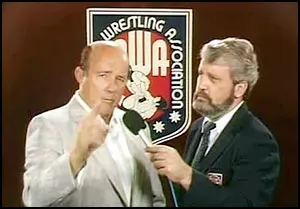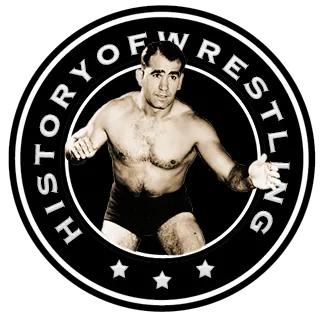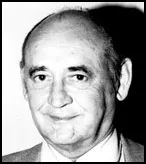by Stephen Von Slagle
American Wrestling Association/Minneapolis Boxing & Wrestling Club (a.k.a. “Minneapolis”)
OWNERS/PROMOTERS:
Tony Stecher (1933-1954)
Dennis Stecher (1952-1959)
Wally Karbo (1952-1991)
Verne Gagne (1959-1991)
STATES & PRIMARY CITIES:
Minnesota (Minneapolis, St. Paul, Duluth, Rochester, Bloomington)
Illinois (Chicago, Rockford, Springfield)
North Dakota (Fargo, Bismarck)
South Dakota (Sioux Falls, Rapid City)
Wisconsin (Milwaukee, Green Bay, Madison, Racine)
California (San Francisco, Oakland)
Nebraska (Omaha, Lincoln, Grand Island)
Colorado (Denver, Colorado Springs, Aurora)
Arizona (Phoenix, Tucson)
Nevada (Las Vegas, Reno, Lake Tahoe)
Idaho (Boise)
Utah (Salt Lake City, Provo)
Manitoba (Winnipeg)
MAJOR CHAMPIONSHIPS:
NWA World Heavyweight title (1948-1960)
NWA World Tag Team title (1957-1960)
AWA World Heavyweight title (1960-1991)
AWA World Tag Team title (1960-1991)
AWA World Women’s title (1961-1990)
PROMOTIONAL HISTORY:
Decades before the American Wrestling Association was founded in 1960, its home-base of Minnesota had long been a major center for professional wrestling. Indeed, dating as far back as the start of the Twentieth century, Minneapolis was host to big-name stars and top-tier matches. Beginning in the early 1930s, promoter Tony Stecher, brother of the three-time former World Heavyweight champion Joe Stecher, further solidified the area’s status by establishing a solid, cohesive circuit that was very popular with the region’s knowledgeable fanbase as well as the talented wrestlers that performed for them. Tony Stecher was one of the founding promoters of the National Wrestling Alliance in 1948 and his lucrative Minnesota territory was among the crown jewels of the early NWA For more than twenty years, Stecher fostered and nurtured the region into one of the nation’s most prosperous territories, setting the stage for even greater successes to come.
Following Stecher’s retirement in 1954, the Minneapolis territory continued on under the auspices of his son, Dennis Stecher, and Wally Karbo before Verne Gagne became a majority owner in 1959. Gagne, Minnesota’s most famous wrestler and one of the top three stars in the entire industry at the time, bought-out Dennis Stecher’s stock in the Minneapolis Boxing & Wrestling Club and soon created the American Wrestling Association. Although Gagne’s AWA began modestly, it quickly gained a foothold outside of its Minnesota base, expanding into major wrestling markets throughout the Midwest in cities like Chicago, Omaha, and Milwaukee. In subsequent years, the AWA would continue its expansion, far outreaching its midwestern base, and eventually became the largest geographical territory in the United States.
Although Verne Gagne would be (accurately) labeled as “behind the times” once his mighty promotion began to crumble in the late 1980s, during the prime years of the AWA, Gagne was perhaps the most forward-thinking and innovative territory owner in the country. The admittedly traditional promoter had the foresight to think outside of the box and as a result of his unique promotional methods, the AWA was spotlighted in previously unexplored ways. In 1974, Gagne produced The Wrestler, a feature film starring Ed Asner, Gagne, and a plethora of AWA legends that played in theaters from coast to coast. Although the film was panned by critics at the time, it has gone on the become a cult classic and was undoubtedly the first movie of its kind. Gagne also negotiated a deal that allowed a star-studded, two-ring AWA Battle Royal to be featured nationally on the country’s number one sports program at the time, ABC’s Wide World of Sports. In 1981, Gagne and talk show host Phil Donahue joined forces to present a truly unique episode of the highly-rated Donahue show that allowed its regional stars to be seen across the country. With its bounty of major markets, a light road schedule (compared to other territories), high pay rate, and an abundance of top-tier talent, the AWA was, arguably, the premier territory in all of professional wrestling during the decade of the Seventies and into the early Eighties.
 However, all good things must come to an end, and this was certainly the case for the American Wrestling Association. The story of the AWA’s demise is well known; after failing to come to an agreement to buy the promotion from Gagne, Vince McMahon went to extraordinary lengths to decimate the AWA. Beginning in 1984, McMahon relentlessly raided Gagne’s bountiful roster of talent, from main-eventers to mid-carders to enhancement talent all the way to the production and front-office staff. He also negotiated, in a highly predatory manner, with all of Gagne’s top television carriers and arenas, oftentimes intentionally over-paying them to replace AWA programming and events with those of the WWF. Although he was relentless in his efforts to dismantle the AWA, Vince McMahon would, ironically, cry foul a decade later when many of the very same methods were used against him by Eric Bischoff and WCW. To his credit, Verne Gagne (who, admittedly, was not the most popular boss among many of his employees) continued on and with new additions to his depleted roster such as The Road Warriors, Bruiser Brody, The Fabulous Freebirds and World champion Rick Martel, the AWA managed to persevere and, in several instances, prosper. But, as each of the newer top-drawing acts inevitably left the promotion for opportunities in the WWF, NWA or Japan and were replaced by talented yet lesser known attractions such as The Midnight Rockers (Shawn Michaels & Marty Jannetty), Curt Hennig, Scott Hall and The Nasty Boys, the cumulative effects were definitely being felt. Beginning around 1986, the AWA started a slow-but-steady downward spiral that eventually resulted in the thirty-year-old promotion closing down permanently in 1991.
However, all good things must come to an end, and this was certainly the case for the American Wrestling Association. The story of the AWA’s demise is well known; after failing to come to an agreement to buy the promotion from Gagne, Vince McMahon went to extraordinary lengths to decimate the AWA. Beginning in 1984, McMahon relentlessly raided Gagne’s bountiful roster of talent, from main-eventers to mid-carders to enhancement talent all the way to the production and front-office staff. He also negotiated, in a highly predatory manner, with all of Gagne’s top television carriers and arenas, oftentimes intentionally over-paying them to replace AWA programming and events with those of the WWF. Although he was relentless in his efforts to dismantle the AWA, Vince McMahon would, ironically, cry foul a decade later when many of the very same methods were used against him by Eric Bischoff and WCW. To his credit, Verne Gagne (who, admittedly, was not the most popular boss among many of his employees) continued on and with new additions to his depleted roster such as The Road Warriors, Bruiser Brody, The Fabulous Freebirds and World champion Rick Martel, the AWA managed to persevere and, in several instances, prosper. But, as each of the newer top-drawing acts inevitably left the promotion for opportunities in the WWF, NWA or Japan and were replaced by talented yet lesser known attractions such as The Midnight Rockers (Shawn Michaels & Marty Jannetty), Curt Hennig, Scott Hall and The Nasty Boys, the cumulative effects were definitely being felt. Beginning around 1986, the AWA started a slow-but-steady downward spiral that eventually resulted in the thirty-year-old promotion closing down permanently in 1991.



